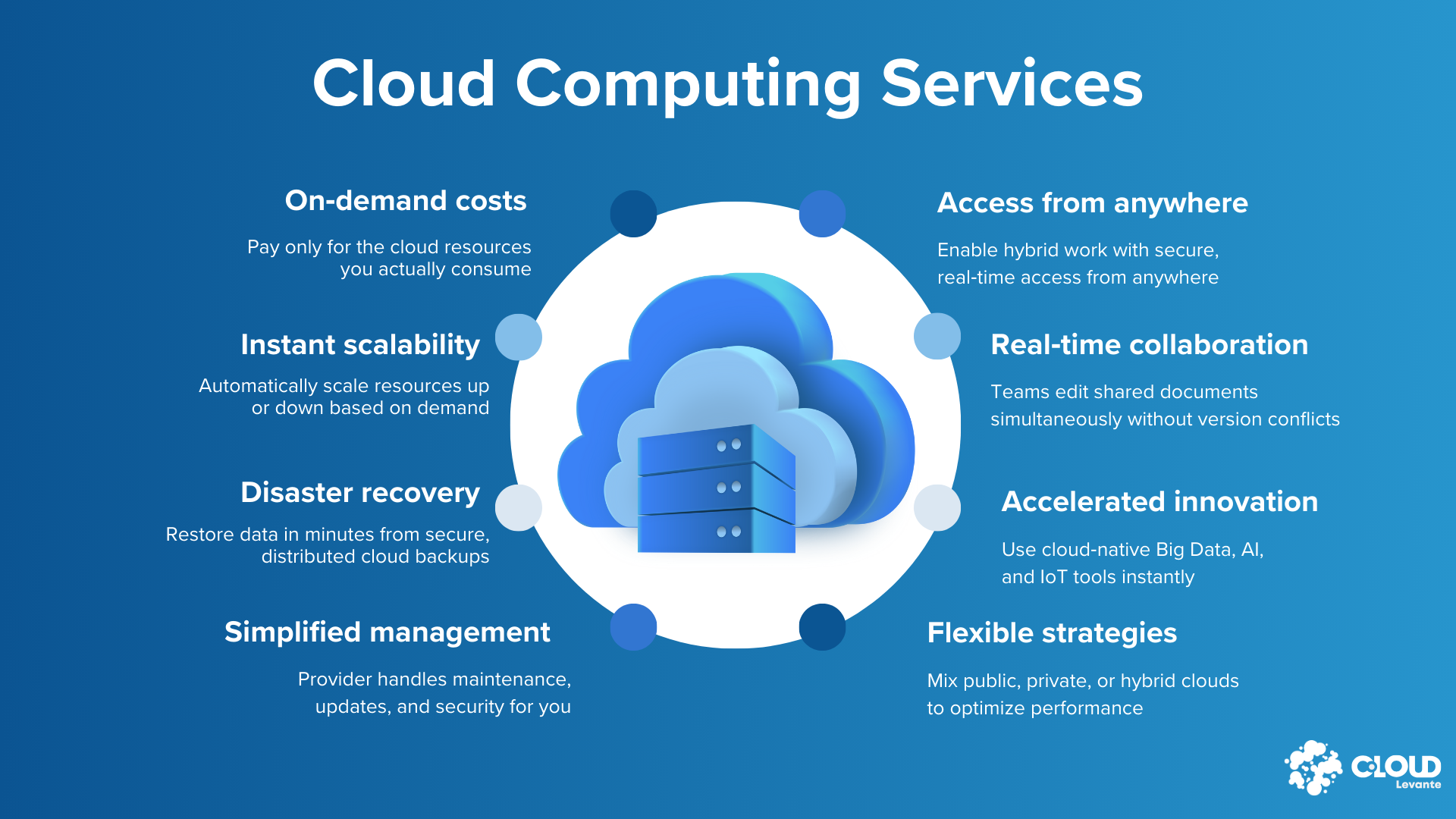8 Benefits of Cloud Computing
A decade ago, cloud computing was an obscure concept. Today, it’s part of everyday life: we rely on the cloud for banking, shopping, social media—and, especially since the pandemic, hybrid work. According to Flexera’s 2021 report, 92% of enterprises now use multiple cloud services, and 90% accelerated their cloud migrations due to COVID‑19.
This raises some key questions: How do the different cloud models work? What benefits does the cloud offer businesses? And what advantages come from centralizing services with a single provider?

What Is Cloud Computing?
Cloud computing is a model that provides access to computing resources—servers, software, storage—over the Internet on a pay‑as‑you‑go basis. Instead of investing in their own infrastructure, companies contract with cloud providers that operate secure data centers. This lets them use online platforms without installing or maintaining software locally.
Users can access these services from any connected device, sharing files in online databases without relying on on‑premises servers.
Common Uses of Cloud Computing
Cloud computing spans a wide range of services, replacing legacy enterprise software and delivering cloud‑native capabilities:
File storage & sharing: Solutions like Google Drive or Dropbox offer virtually unlimited space, real‑time collaboration, version control, and access from anywhere.
Backup & disaster recovery: Tools such as Backblaze, Acronis, or AWS automatically back up data to secure data centers. If a local system fails, you can restore everything in minutes.
Big data analytics: With corporate data synced in the cloud, you can apply AI and machine learning for forecasting, IoT automation, and data‑driven strategic decisions.
Business processes: CRM (Salesforce, HubSpot), ERP (Oracle, SAP), accounting (FreshBooks, QuickBooks), and HR (BambooHR, Namely) run in online portals with no local installation.
Communications: Collaboration apps, virtual presentations, contact centers, and unified‑communications APIs integrate voice, video, and messaging without on‑premises infrastructure.
What Are the Benefits of Cloud Computing?
With an effective cloud‑migration strategy and the right providers, businesses gain access to technology that delivers these advantages:
1. On‑demand costs: No large upfront investments in servers or licenses. The cloud uses subscription or pay‑per‑use pricing: you pay only for the resources you consume, when you consume them.
2. Anywhere access: Enables remote and hybrid work. Teams connect to applications and data in real time from any Internet‑enabled device, with no complex setup.
3. Instant scalability: Adjust resources on the fly to match demand—ramp up during peak periods and scale down when demand falls. This optimizes performance and controls budget.
4. Real‑time collaboration: Share documents, databases, and projects with full synchronization. Every team member always works on the latest version, reducing errors and speeding decision‑making.
5. Disaster recovery: Backups reside in geographically distributed, highly secure data centers. In the event of a local failure, you can restore data in minutes, ensuring business continuity.
6. Accelerated innovation: Big Data, AI, and IoT are native to the cloud. Analyze vast datasets, build custom applications, and roll out advanced features without waiting to deploy and configure your own data center.
7. Simplified management: Choose among SaaS, PaaS, IaaS, or DaaS based on your desired level of control. Your provider handles maintenance, updates, and security, freeing your team from operational tasks.
8. Flexible strategies: Mix public, private, and hybrid clouds according to data criticality and budget. Integrate services from multiple providers to maximize performance and cost‑efficiency.
Cloud computing delivers a multitude of advantages that vary with each company’s infrastructure and technology. Yet the main driver behind most migrations is clear: in a fiercely competitive digital era—where constant change is the norm, customers demand seamless experiences, and employees need to work from anywhere—cloud computing is the key enabler of the agility and flexibility companies require.
